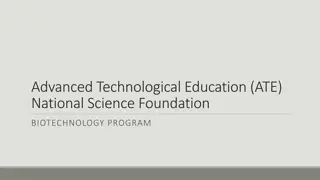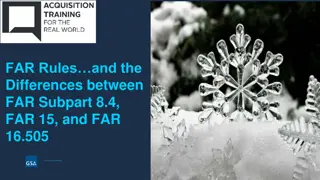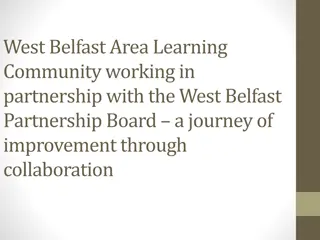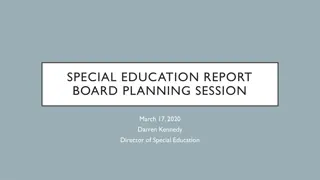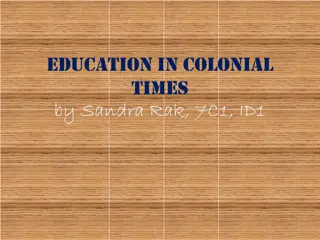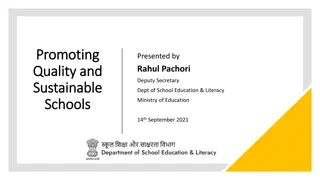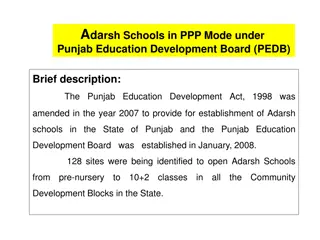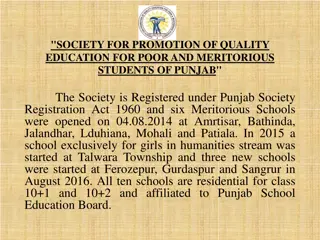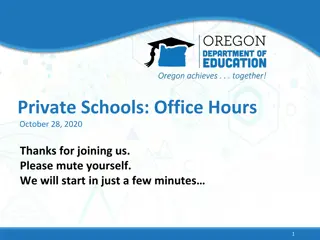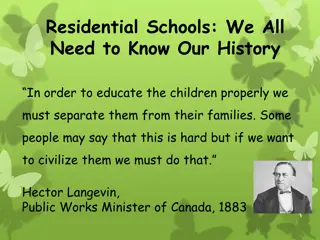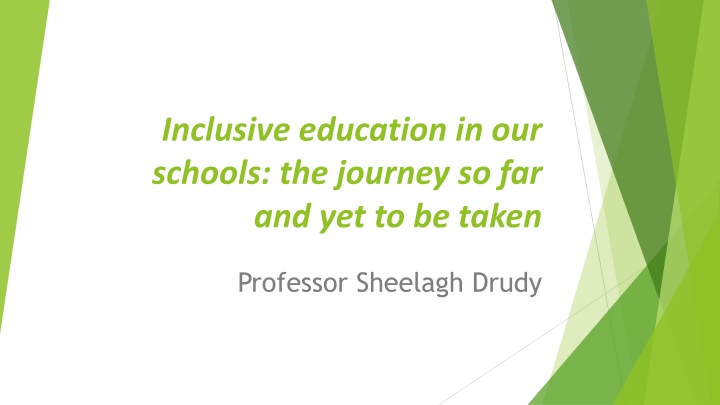
Inclusive Education: A Journey of Progress and Challenges
Discover the evolution of inclusive education in schools, from segregation to inclusion, highlighting key milestones, legislation, court cases, and international influences. Explore the impact of the United Nations Convention on the Rights of Persons with Disabilities on creating an inclusive education system that respects diversity and human rights.
Download Presentation

Please find below an Image/Link to download the presentation.
The content on the website is provided AS IS for your information and personal use only. It may not be sold, licensed, or shared on other websites without obtaining consent from the author. If you encounter any issues during the download, it is possible that the publisher has removed the file from their server.
You are allowed to download the files provided on this website for personal or commercial use, subject to the condition that they are used lawfully. All files are the property of their respective owners.
The content on the website is provided AS IS for your information and personal use only. It may not be sold, licensed, or shared on other websites without obtaining consent from the author.
E N D
Presentation Transcript
Inclusive education in our schools: the journey so far and yet to be taken Professor Sheelagh Drudy
From Segregation to Inclusion From 1922 1990s From low point (8 institutions) gradual expansion but mainly charitable, private and voluntary largely medical model From 1950s onwards gradual expansion education for SEN 1993 SERC Report (asserts rights; continuum of education; comprehensive framework proposed but no mention of autism; ) 1998 Education Act first comprehensive act to regulate the system 1998 EA specifically set out to make provision in the common good for the education of every person in the state, including those with a disability or other special educational need
From Segregation to Inclusion Court cases - e.g. O Donoghue and Sinnott + many more (49 - Ring) Task Forces on Autism & Dyslexia 2002 + many more reports Many acts have an impact on rights of children with disabilities/special needs e.g. Equal Status Acts 2000-2004, Education (Welfare) Act Increases in SETs & SNAs up to present 2004 EPSEN Act (of which more later) + other relevant acts See: Special Education in an Independent Ireland 1922-2022 by Emer Ring, 2024 (https://ncse.ie/research-reports)
International influences on the movement to inclusion Various UN Declarations and Conventions on Rights: 1948. 1950, 1989 Salamanca Statement 1994 Recognised the necessity and urgency of providing education for children, youth and adults with special educational needs within the regular education system UNESCO Framework for Action on Special Needs Education Wished governments and organizations to be guided by the spirit of its provisions and recommendations Ireland represented among 92 countries
United Nations Convention on the Rights of Persons with Disabilities 2006: Article 24 (UNCRPD) Persons with disabilities have a right to education. States shall ensure an inclusive education system at all levels and life-long learning directed to: 1. The full development of human potential and sense of dignity and self-worth, and the strengthening of respect for human rights, fundamental freedoms and human diversity; 2. The development by persons with disabilities of their personality, talents and creativity, as well as their mental and physical abilities, to their fullest potential; 3. Enabling persons with disabilities to participate effectively in a free society.
UNCRPD Adopted by UN in 2006 Ratified by Ireland in 2018 Optional protocol (which establishes an individual complaints mechanism for the UNCRDP) not yet ratified
International influence: EASNIE (European Agency for Special Needs and Inclusive Education) EASNIE - an independent organisation that acts as a platform for collaboration for the ministries of education in 31 member countries, co-funded by the EU EASNIE on SEN: Special or additional needs should not be seen as the result of in-child factors, but rather as a discrepancy between what a system of schooling ordinarily provides and what the child needs to support their learning
International influence: EASNIE definition of inclusion While inclusion still a contested concept EASNIE defines it as follows: An inclusive setting refers to education where the child/learner with SEN follows education in mainstream classes alongside their mainstream peers for the largest part 80% or more of the school week. Note: Irish policy currently enables a continuum of provision i.e. inclusion in mainstream; special classes (primary & post- primary 3,700 in 2024/5); special schools (134 in 2024/5).
International influences: Inclusion who can be included? (UNESCO) All children regardless of their physical, intellectual, social, emotional, linguistic or other conditions Disabled and gifted children Street and working children Children from remote or nomadic populations Children from linguistic, ethnic or cultural minorities Children from other disadvantaged or marginalized areas or groups
Ireland moving forward: Education for Persons with Special Educational Needs (EPSEN) Act, 2004 Sections commenced: Sections 1, 2, 14, 19-37, 39, 40-53, Schedules 1 & 2 Involved inclusive education for children with SEN, duties on Health Boards, amendments to EA Placed NCSE on statutory footing
EPSEN Act 2004 Sections not commenced The Sections of the EPSEN Act which have not been commenced are those which would have conferred a statutory entitlement to: An educational assessment for all children with special educational needs Consequent development of a statutory individual educational plan (IEP). The delivery of detailed educational services on foot of this plan An independent appeals process.
Moving Forward: Review of EPSEN Reasons for review: To provide assurance that there is an adequate legislative basis for the educational provision, both current and planned, for children with special educational needs in order to protect the interests of the children concerned and their families and those of the state To reflect best practice To take stock of policy developments
Moving forward: Review of the EPSEN Act, 2004 Review groups: Steering Group Working Group Advisory Group
Review process Research quantitative, qualitative, literature, including by NCSE & policy advice Experiences and views of organisation members, Organisation submissions Advisory Group recommendations to Steering Group Final Report and Decisions by Ministers
Challenges facing us Education should be rights based: UNCRPD School leadership; teamwork; SEN post; clinical & therapeutic supports; UDL; partnership with parents; student voice; local school appropriate; transitions; early ed/FE Language special ? additional ?; definition of inclusion Departments of education & health coordination (& other depts) Need for greater resources and better use of existing resources Greater training for inclusion in ITE; mandatory(?) inclusion training in CPD; training, qualifications and support for SNAs Is an inclusive system compatible with a competitive system?

